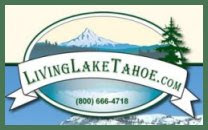If you haven't already started then now is prime time for Spring cleaning. The chills and frosts of Winter are a distant memory and this means you can comfortably get out in that yard, shed, or garage and do some real work!
Where do you start, though? It can be an overwhelming task, especially if it's been years -- or never -- since you did a thorough Spring once-over.
Our experts recommend that you begin with a solid game plan. Begin your planning with a comprehensive list. Go through each room and write down what needs to be done. Some rooms need a deep cleaning of the carpets while others simply need the clutter removed. One home may need the gutters cleaned and sidewalks repaired while another may just need flower beds weeded.
Now that you have your list, it's time to prioritize. Some people like to start with the big projects or things they'd rather not do. This ensures these less fun tasks get done even if you lose motivation. Sometimes you need to prioritize by type of cleaning. You must declutter before you paint. Likewise, you must paint before you have your carpets cleaned.
Start with one room and work your way through the house. Sort items into "things to store", "things to sell" and "things to trash."
Get rid of old stuff at a garage sale. Donate what doesn't sell. Don't drag it back into your home.
One you're organized and decluttered, you're ready to move onto the heftier projects, like painting and deep cleaning.
Most any cleaning can be done yourself. If you have the funds, you can always hire a professional carpet cleaning service, maid service, or even window washer. If you don't have that extra cash laying around, it's time to roll up your sleeves and put some sweat equity into your home.
Finally, don't forget about your yard and green spaces. Start from the top and work your way down. This means clean out your gutters, which will prevent roof rot. Trim your trees of any broken or dead branches. Then work on the lawn and beds.
By working from the top down, you'll make sure that the pick-up step only has to be done once. It would be a shame to pick up the yard only to have a pile of limbs land in it again. Sack leaves and clippings and rake and haul away downed limbs and sticks after any trimming.
The last step is to mulch around trees and in flower beds and to stage your seating areas. Add a pop of fresh color with some Springtime flowers. Petunias are a great addition to any patio or deck. Plus, they'll bloom all Summer long. Wash off any outdoor furniture and cushions and consider adding some indoor/outdoor touches like throws, pillows, and natural fiber rugs.
Spring cleaning can be quite the chore, but you'll love reaping the benefits of an orderly home and yard for the year to come.
Written by Carla Hill
May 25, 2012
Thinking about Buying or Selling?
Call Alvin's Team Today! 877-651-7810
Or visit our website: www.LivingLakeTahoe.com

